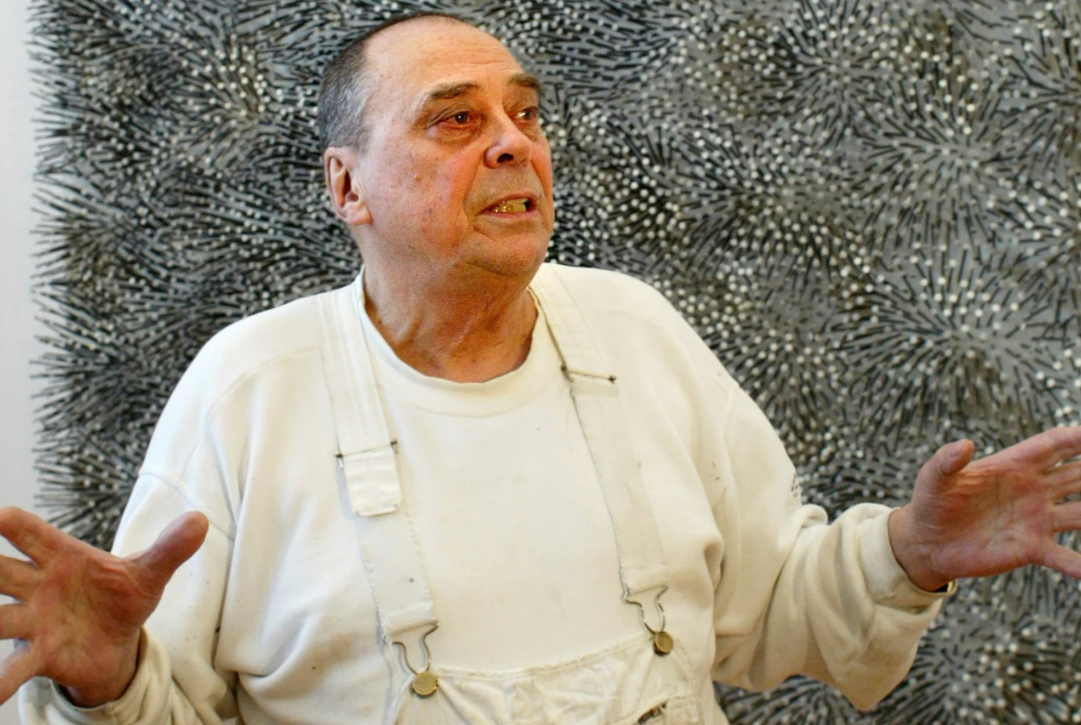German artist Günther Uecker, renowned worldwide for his large-scale nail relief artworks and considered one of Germany’s most significant post-war artists, has passed away at the age of 95. His family confirmed he died Tuesday night at a university hospital in Düsseldorf, his hometown in western Germany, though they did not disclose the cause of death.
Uecker, often called “the nail artist,” spent decades creating unique pieces by hammering thousands of carpenter’s nails into everyday objects such as chairs, pianos, sewing machines, and canvases. His art, held in museums and collections worldwide, transformed nails—typically seen as sharp and harmful—into harmonious, almost organic patterns resembling waving grass or marine algae fields.
He described his nail art as “diary-like landscapes of the soul,” an expression of the poetic power of humanity. Hendrik Wüst, governor of North Rhine-Westphalia, praised Uecker as a vital figure in post-war German art who inspired generations and helped foster an open and dynamic society.
Born in 1930 in the village of Wendorf by the Baltic Sea, Uecker moved to Düsseldorf in the 1950s to study and later teach at the city’s prestigious art academy. Known for his unconventional performances, in 1978 he famously rode a camel through the academy’s hallways. In 1968, together with fellow artist Gerhard Richter, he staged a notable protest at the Kunsthalle Baden-Baden museum.
The son of a farmer, Uecker traveled extensively, spreading a message of peace and exhibiting his work in many countries, including authoritarian regimes. He created ash paintings responding to the 1986 Chernobyl nuclear disaster and displayed human rights-themed fabric art in Beijing.
His work often tackled themes of violence and suffering, with pieces featuring “Verletzungswörter” — words of violence and torment written in various languages and scripts on large canvases. In 2023, Uecker installed a stone memorial in Weimar honoring victims of the Nazi concentration camp Buchenwald.
Uecker once said that the central theme of his art was “the vulnerability of man by man.”













